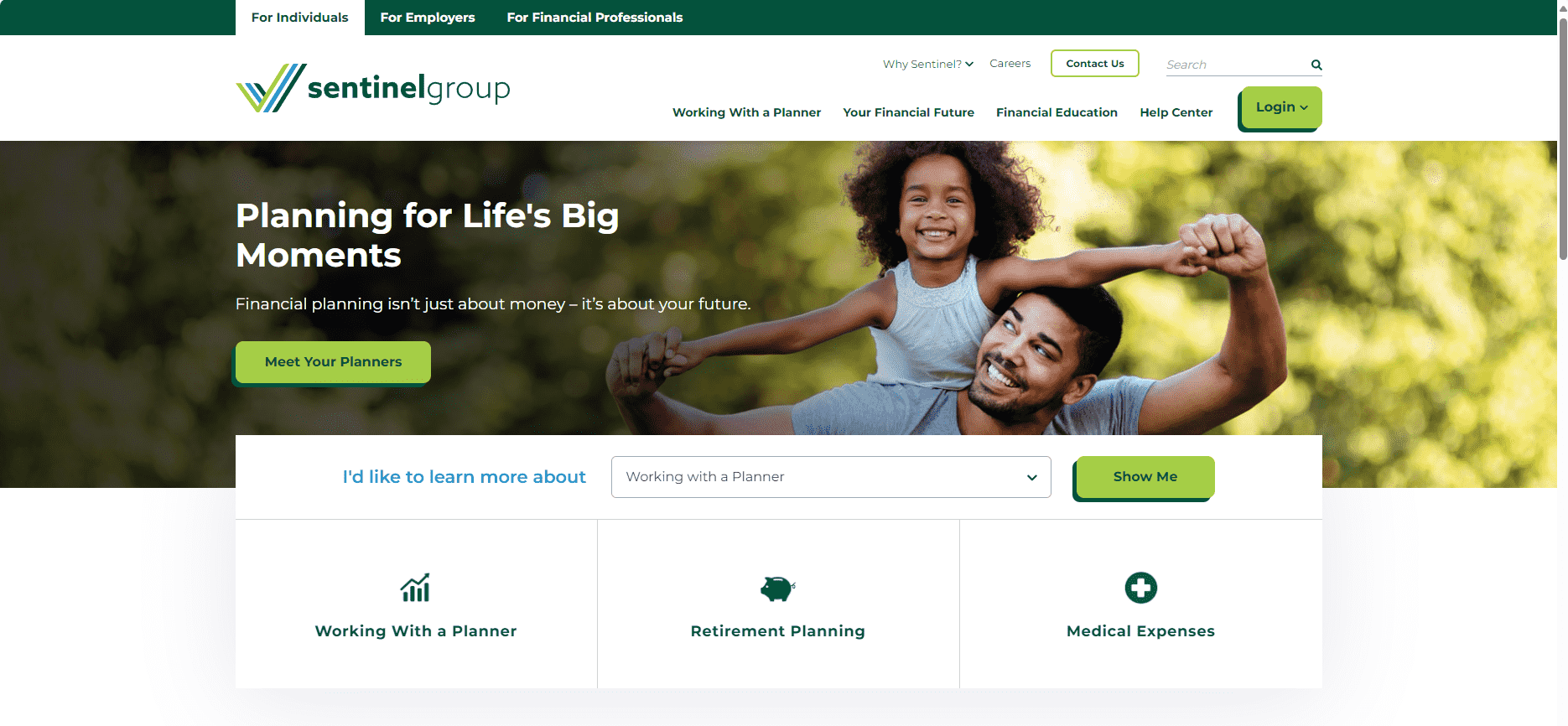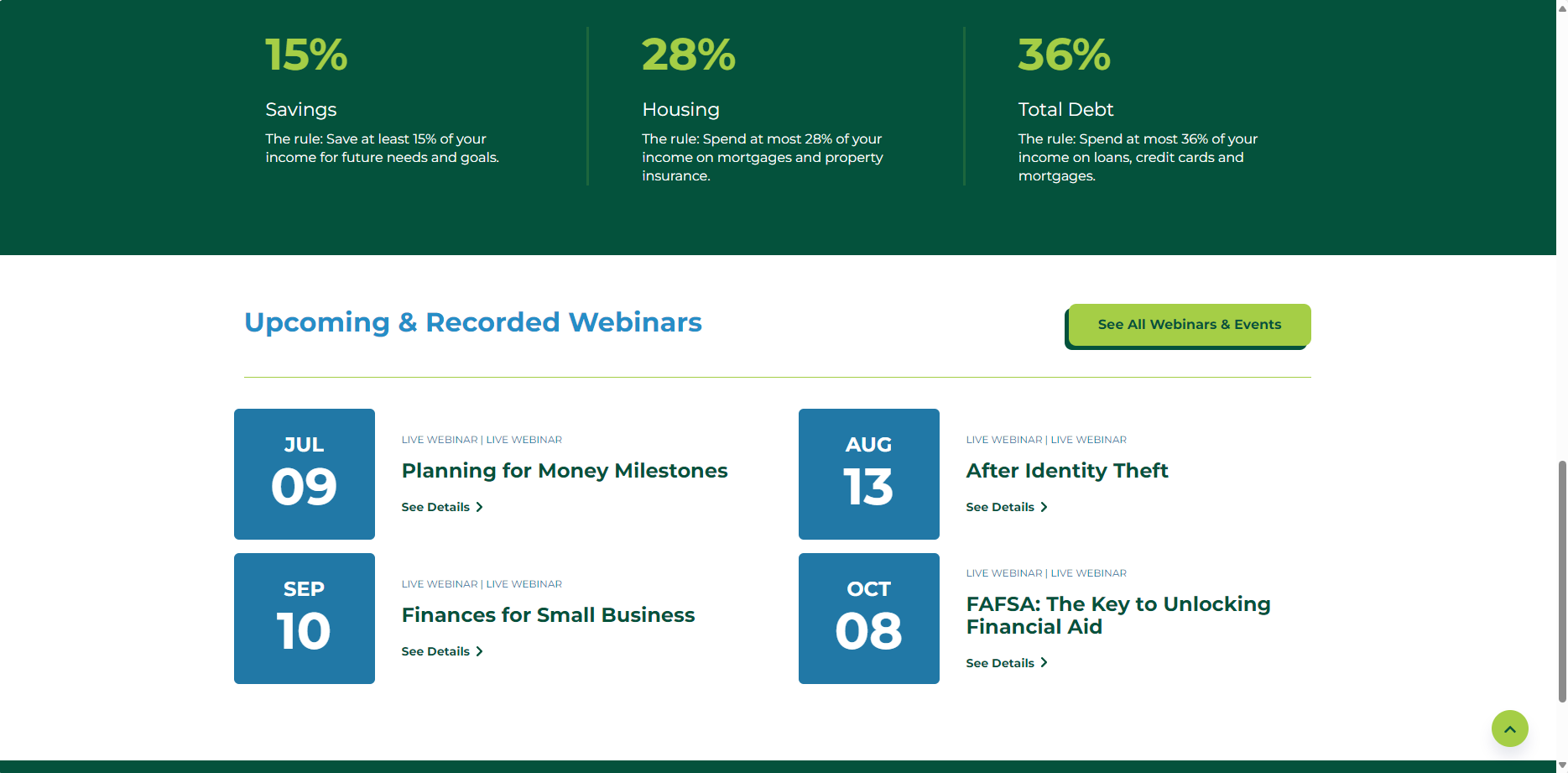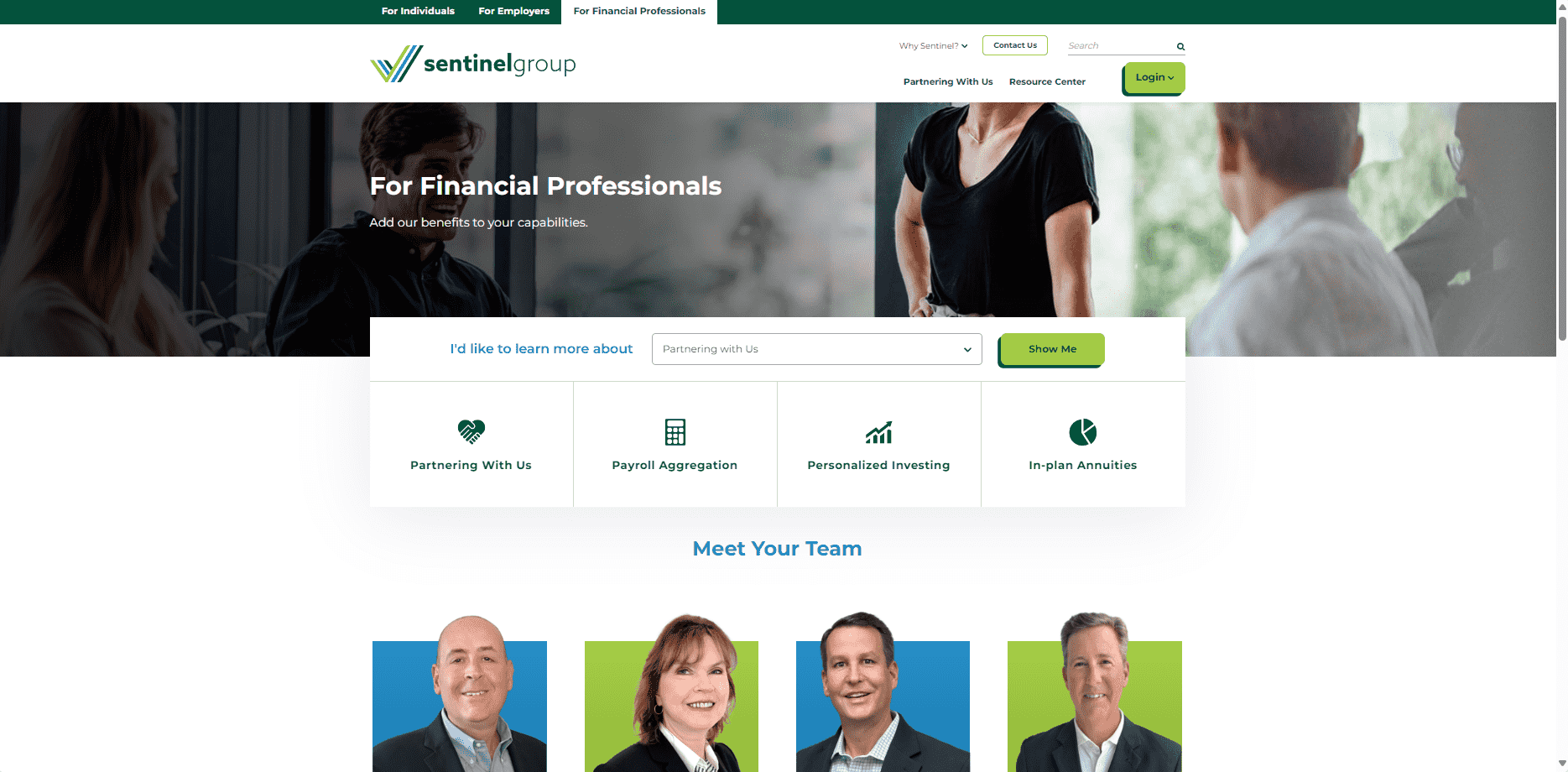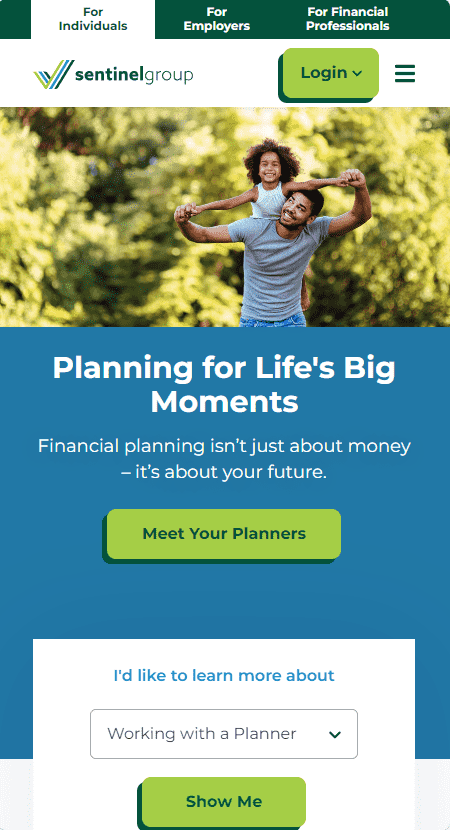SENTINEL
Services we provide:
- Discovery
- Strategy
- UX/UI design
- Website development
- Kentico implementation
About Sentinel
Sentinel is one of the largest employee benefits providers in the Northeast with 4,000+ clients and more than 250,000 plan participants. Sentinel partnered with SilverTech for their website redesign to accentuate their competitive advantages to other providers and strengthen brand messaging and company culture online. Additionally, they wanted to highlight Sentinel as a one-stop-shop benefits provider for employers and employees. Sentinel sought SilverTech’s expertise to create an experience geared towards the individual including storytelling elements through iconography, lifestyle-type imagery, and testimonials on their website.
The Process
Sentinel chose SilverTech’s recommendation of Kentico for several reasons. What appealed most to them was the easy-to-use interface for content editors, the ability to tag content clearly and effectively for multiple user groups, varied ability levels/place in the sales funnel, and the platform’s marketing automation abilities. Since the main goal of this website redesign was to create lead generation, the power and customizable functionality of the Kentico CMS coupled with the easy-to-use personalization and marketing automation features was a no brainer for Sentinel.
The Challenges
SilverTech faced several challenges throughout working on this project. One of the pains of Sentinel’s old site was that the homepage was difficult to use, asking users to act before understanding who Sentinel is. The new website clearly communicates the Sentinel brand before asking users to act. Another challenge that SilverTech faced was placing educational materials and related resources in a location and manner on the website that would be the most beneficial to users. This would make it easy for users to find information on their own and eliminate the need for Sentinel to send users direct links to the information. Sentinel loves the new website and SilverTech was able to address all the challenges of the old website.
RESULTS
The Benefits of Structured Content in Headless CMS Solutions
By: Erin Presseau | 9/4/24
In a fast-paced digital landscape, businesses need to deliver content across a variety of platforms—websites, mobile apps, internet-enabled devices, and more. Most organizations today utilize a Content Management System (CMS) to manage marketing and product content. Traditional CMS solutions that leverage unstructured content make content re-use or re-purpose difficult or impossible. The content is typically locked into a particular format for one particular purpose. Central to the success of a lean marketing team and modern content management solution is the use of structured content. Let’s look at the benefits of structured content in headless CMS solutions.
What is Structured Content?
Structured content refers to content that is organized into predefined fields, making it easily reusable and adaptable across different channels and formats. Unlike unstructured content, which is often locked in a specific format (like a webpage), structured content is modular and can be dynamically pulled into various contexts.
For example, a piece of structured content might include separate fields for a headline, body text, author, publication date, and images. This content can then be reassembled in numerous ways—whether it's a blog post, a social media snippet, or an app notification.
Benefits of Structured Content in Headless CMS Platforms
1. Omnichannel Delivery
One of the biggest advantages of structured content is its ability to support omnichannel delivery. In a headless CMS, content is stored centrally and can be distributed across any number of channels through APIs. Whether you're pushing content to a website, a mobile app, or a voice assistant, structured content ensures that your message is consistent and correctly formatted across all touchpoints.
2. Enhanced Content Reusability
Structured content is inherently reusable. Because the content is broken down into components, you can easily repurpose it across different sections of your digital ecosystem. For instance, the same product description can be used on an e-commerce site, within a mobile app, and even in a chatbot conversation. This not only saves time but also ensures consistency in messaging, which is critical for brand integrity.
3. Improved SEO Performance
Search Engine Optimization (SEO) is a critical consideration for any digital content strategy. Structured content allows for more precise control over metadata, headings, and other SEO-critical elements. By breaking content into distinct fields, it's easier to implement keyword strategies across different parts of your content. For example, in a headless CMS, you can separately optimize the title tag, meta description, and body content, ensuring that each element is aligned with your SEO goals.
4. Faster Time-to-Market
In today's competitive environment, speed is essential. Structured content allows teams to work more efficiently by reducing redundancy and streamlining workflows. When content is structured, it's easier to collaborate across departments, automate publishing processes, and quickly adapt to changes in strategy or market conditions. This leads to faster content production and a quicker time-to-market, giving you an edge over competitors.
5. Personalization at Scale
Personalization is key to engaging modern consumers and structured content makes it easier to deliver personalized experiences at scale. By leveraging the modular nature of structured content, businesses can create dynamic, personalized content experiences based on user preferences, behavior, and context. For example, a headless CMS can pull different pieces of content from the same structured repository to deliver a customized experience to each user.
6. Modern Content Strategy
As digital platforms evolve, so do the requirements for delivering content. Structured content ensures that your content is future-proof by making it easier to adapt to new platforms and technologies. Whether you're adopting new devices, expanding into new markets, or simply updating your digital presence, structured content allows you to pivot quickly without needing to overhaul your entire content strategy.
7. Enhanced Content Governance
Managing content across multiple platforms can be challenging, especially when consistency and compliance is crucial. Structured content simplifies content governance by making it easier to track, update, and audit content across various channels. This is particularly beneficial in industries with strict compliance requirements, where accurate and up-to-date content is essential.
Structured content is the backbone of effective content management in headless CMS platforms. By embracing structured content, businesses can unlock the full potential of these platforms, delivering consistent, personalized, and optimized content experiences across all digital channels. If you're looking to maximize your content strategy and gain a competitive edge, ask us how we’ve helped many clients realize the benefits of structured content in CMS platforms.




